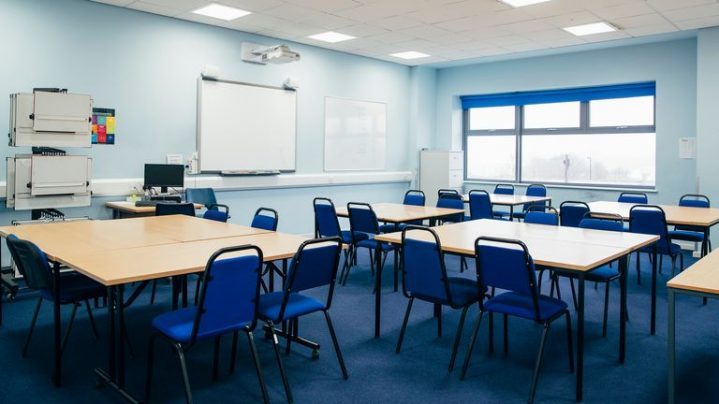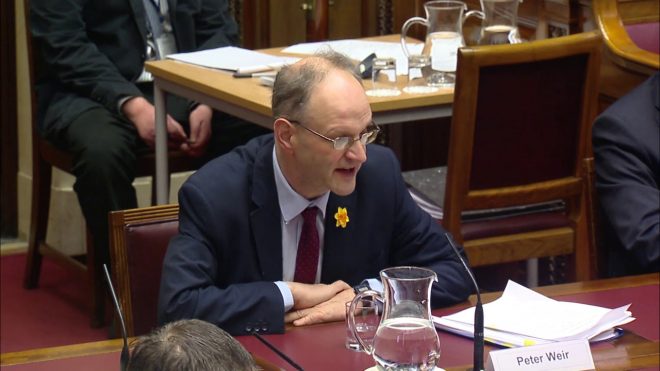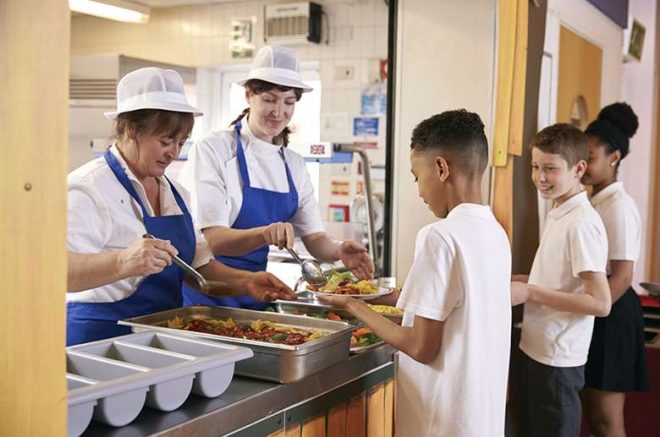
Schools across the North have been empty since lockdown in March
The Education Minister announced the move on Thursday which took principals, teachers and trade unions by surprise.
Peter Weir said social distancing measures between pupils will be “relaxed”, but whole class “bubbles” will limit mixing.
The Ulster Teachers Union (UTU) said there were concerns over how quickly schools could react to new guidance and how it could be implemented.
Mr Weir said social distancing would not be “abandoned” and that it was right to prioritise education.
UTU General Secretary Jacquie White said schools had already started to plan for a mixture of pupils splitting their time between the classroom and studying at home.
Updated guidance on reopening is due be issued to schools next week by the Department of Education (DE).
Ms White said new guidance means many schools will now have to do “a quick turnaround” in adapting previous measures for a greater number of pupils.
“This announcement yesterday is promising further guidance which isn’t going to come out until potentially the end of next week and teachers are back in school on 17 August.
“It’s a very quick turnaround in trying to take plans that have already been put in place and adapt them for large numbers,” Ms White said.
“There will be children in the school when we try and make these adjustments,” she added.
Ms White questioned the logic behind Mr Weir’s announcement, pointing out that it came on the same day the executive announced face coverings would become mandatory shops following a rise in the rate of transmission.
Peter Friel, who is principal of St Pius X College in Magherafelt, said there is still a “great deal of uncertainty” around how pupils returning will actually work.
Mr Friel said he “cautiously welcomed the decision” by Peter Weir to have pupils return five days a week and said that previous suggestions of maintaining social bubbles within schools would prove too problematic.
Mr Friel said in his particular school, they would require 45-50 bubbles if they were to adopt such a model.
He believes that some suggestions of limiting the movement of older pupils around schools cannot feasibly work in a secondary school setting.
“Those who are older are slightly at greater risk, but even the idea that classes will stay within the rooms will create huge problems within a secondary school.
“I cannot envisage in my own mind how that would work at St Pius, when kids go to science have to go to a science labs, when they go to technology and design they have to go the technology department,” Mr Friel said.
The school principal said the health and safety of children and teachers is paramount and has called for careful consideration from the executive for future guidance.

Education Minister Peter Weir says pupils will return to school full time in new term
He said a wide range of protections would be put in place and that schools would still be required to keep most pupils in whole-class “bubbles” to limit mixing.
“Any action that is taken within Covid, any inaction, carries some level of risk,” he said.
“We are not saying social distancing is abandoned.
“There would be whole class bubbles from years 1-10 and we will minimise movements of other classes from years 11-14.”
The executive passed a proposal from the minister at its meeting on Thursday. It includes a return to school for those who attend special schools.
Pupils going into years seven, 12 and 14 are to return to school on 24 August with all other pupils returning from 31 August.
In a letter to principals, Mr Weir said that previous advice requiring social distancing of 1m (3ft) in classes would change.
“Strict social distancing requirements between all pupils will be relaxed from a specific distance to the best spacing that can be achieved but will remain in place between adults and, as far as it is practicable, between adults and pupils,” he said.
“Schools should continue to implement as much social distancing as is practical and where physical capacity and curriculum delivery permit.
“On the return to school, the overriding provision will be a full class return with all appropriate and practical protections put in place.”
“I recognise that the approach will vary depending on age group,” Mr Weir said.
“In pre-schools, primary and special schools, it is envisaged that in most cases a relatively straightforward approach can be adopted.
“A class will act as a single consistent group or bubble, with minimal prolonged interaction with other classes within the school.”
However, arrangements for post-primary pupils in years 11-14 will differ as pupils will need to move between classrooms depending on what subjects they are studying.
“For Years 11-14, it is recognised that a single consistent class group will not be possible, as pupils will be in mixed classes based on their choice of examination courses, but schools are encouraged to keep movements and interactions within these year groups to an absolute minimum,” Mr Weir said.

School meals for children will resume on August 31
“While parents and children should be encouraged to use other means of travelling to school for example, walking or cycling where it is safe and reasonable to do so, we recognise that for many children the home to school transport network may be the only available option,” Mr Weir said.
“There will therefore be no requirement for children to follow public transport guidance for social distancing between pupils on dedicated home to school transport vehicles.”
“However, where it is possible to socially distance, pupils should do so.”
Mr Weir also said that school meals would be provided from August 31.
Tags:




